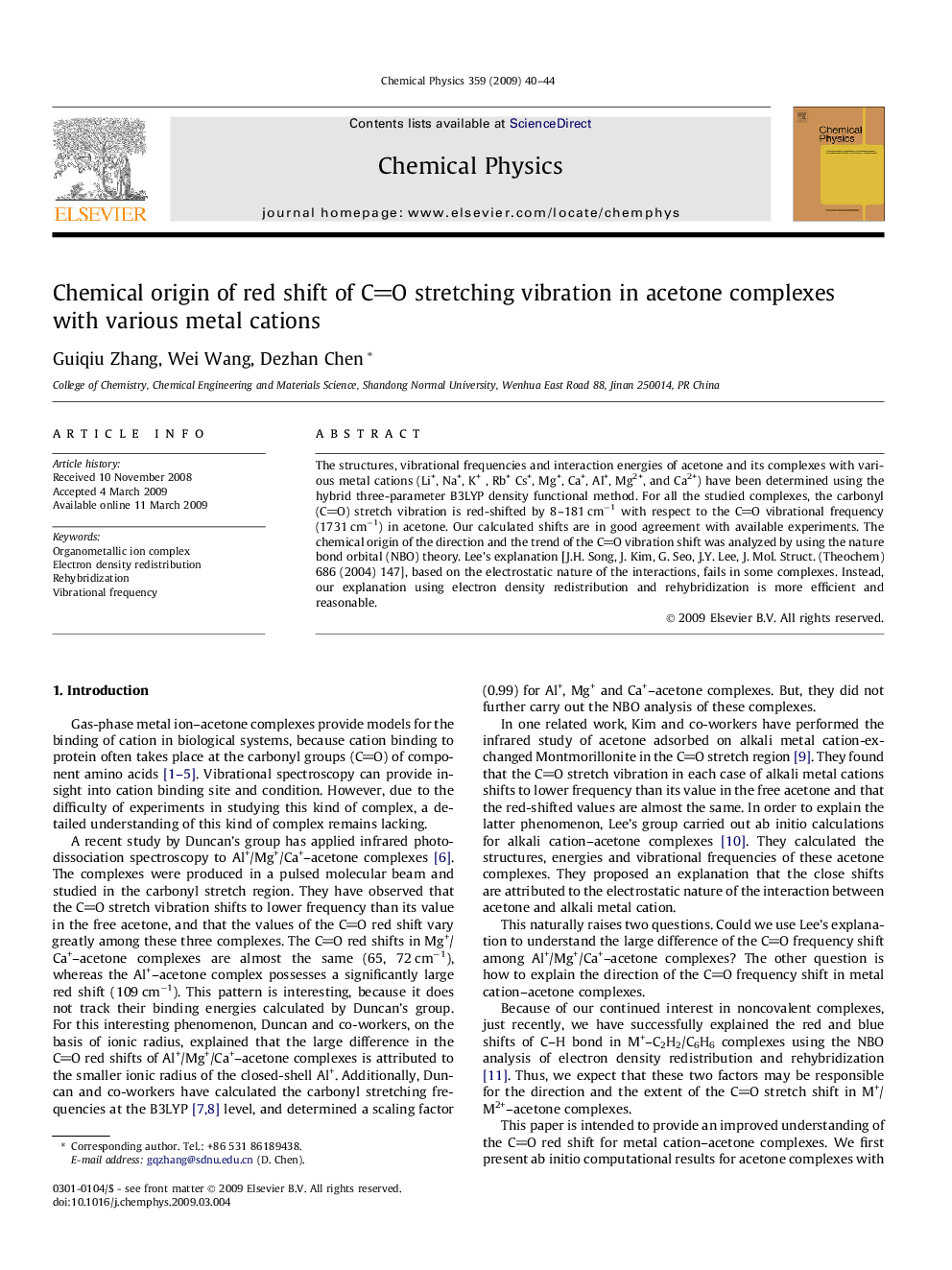| Article ID | Journal | Published Year | Pages | File Type |
|---|---|---|---|---|
| 5375598 | Chemical Physics | 2009 | 5 Pages |
Abstract
The structures, vibrational frequencies and interaction energies of acetone and its complexes with various metal cations (Li+, Na+, K+ , Rb+ Cs+, Mg+, Ca+, Al+, Mg2+, and Ca2+) have been determined using the hybrid three-parameter B3LYP density functional method. For all the studied complexes, the carbonyl (CO) stretch vibration is red-shifted by 8-181Â cmâ1 with respect to the CO vibrational frequency (1731Â cmâ1) in acetone. Our calculated shifts are in good agreement with available experiments. The chemical origin of the direction and the trend of the CO vibration shift was analyzed by using the nature bond orbital (NBO) theory. Lee's explanation [J.H. Song, J. Kim, G. Seo, J.Y. Lee, J. Mol. Struct. (Theochem) 686 (2004) 147], based on the electrostatic nature of the interactions, fails in some complexes. Instead, our explanation using electron density redistribution and rehybridization is more efficient and reasonable.
Related Topics
Physical Sciences and Engineering
Chemistry
Physical and Theoretical Chemistry
Authors
Guiqiu Zhang, Wei Wang, Dezhan Chen,
